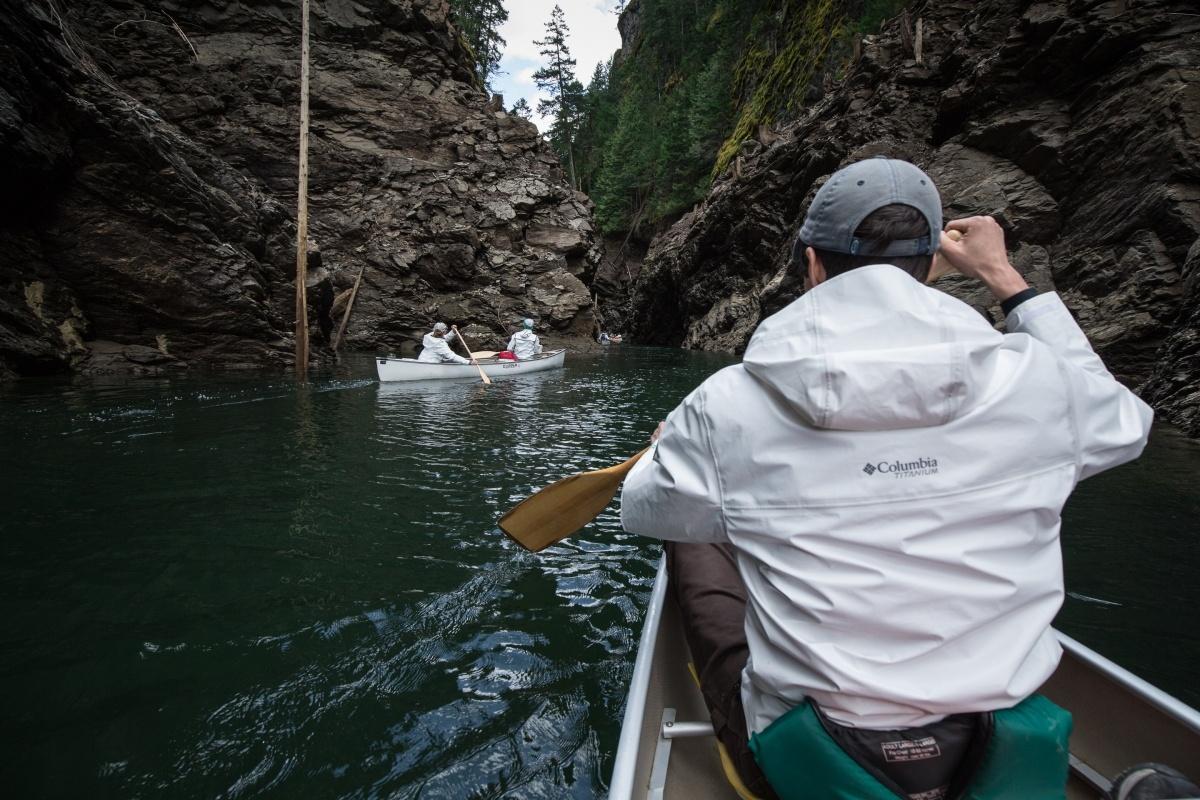
By Derek Eisel
Contemplating a sustainability MBA? Calculating a big company’s first carbon footprint? Implementing sustainability software for the first time? Why not do all three at the same time?
That’s what Christina Barry-Simmons and Lex Agapinan did. They used their Pinchot University graduate project to demonstrate the value of measurement and transparency in supporting Columbia Sportswear's sustainability work. I interviewed them to find out if they are in fact crazy.
Derek Eisel: What did you set out to do?
Christina Barry-Simmons: Our first pass was helping Columbia Sportswear map the [carbon] footprint for all of its owned facilities globally. But we quickly realized that would be challenging due to data collection, so we narrowed the scope to U.S. and Canada in an effort to complete the work in our school year.
Lex Agapinan: Yes, we immediately recognized we were being too ambitious.
DE: Right, so you were working and also getting your MBA from Pinchot at the time ...
CBS: We needed to do a capstone project for our MBA, and Lex was already working at Columbia. Columbia’s focus has been on the sustainability of the apparel itself and hadn’t mapped its operational footprint yet, so it felt like a great opportunity.
DE: Once you realized you were maybe being a bit ambitious in terms of your work load and time constraints, how did you adapt?
LA: The biggest, most effective thing was limiting our scope to what data we were confident we could get and what data we could trust to be accurate. We had some difficulty getting electricity and other kinds of data from some parts of the globe. Another decision was to exclude the brand Prana, which recently joined Columbia.
DE: Why did Columbia want to calculate its carbon footprint now? What was the company's urgency?
CBS: The biggest driver was transparency to investors and customers, who are beginning to demand transparency.
LA: What’s not measured tends to be [left unmanaged], and it makes us a little nervous to not know our metrics.
DE: Did you run into any surprises?
CBS: This was a great opportunity to learn how complex and time-consuming it is to gather data and calculate an operational footprint. It was good to have Scope 5 in our tool-belt for just those reasons. Without Scope 5 as a platform and team, we would have struggled enormously to do what we did.
LA: When I think about approaching this without a tool ... I’ve worked with big spreadsheets before, and they are a mess. We absolutely needed guidance about what data to collect and how to organize it. I would have been very unlikely to have been able to take time to find all the conversion factors (to convert kilowatts and other raw data to CO2 equivalent), otherwise, and to have to do that every year. Having a tool you can rely on means I can trust the calculations and not worry about messing up formulas in some complex spreadsheet.
CBS: Plus, it was great to have templates for CDP reporting and how to easily pull together the data to answer the CDP questions.
DE: Now that you’ve calculated Columbia’s first carbon footprint and completed your masters program, what advice would you give others who are crazy enough to do this?
LA: Work with a team. Don’t go it alone. Columbia, Pinchot, everyone came together. Pinchot gave advice about having a reliable timeline and context and also validation for how hard this is. If you don’t know how to do this, surround yourself with others who do. If you’re doing it without a tool, expect to quadruple the time.
CBS: Don’t underestimate the time it will take. There’s a lot of waiting for people to give you data. Some of the people you’re asking to give you data won’t understand the scope of the ask. A lot of time is spent simply waiting and responding. People aren’t motivated to get back to you. Don’t underestimate the beast. Ask for data six months before you need it. It’s important to work with a tool and to fund a dedicated resource devoted to data collection and reporting. Lastly make sure that you have buy-in for this all the way to the top. And, make sure those leaders communicate the importance of the data to the people who will be giving it to you including a sense of urgency.”
Thanks Christina and Lex, and congratulations to Columbia Sportswear for your first operational carbon footprint. Sounds like some key takeaways are:
- Get support from the top of the organization so getting data from people will be easier and more timely.
- Devote people to the effort who have the skills and time for it
- Find the appropriate tooling to support the calculation and analysis. Depending on the size of your organization and scope of your data spreadsheets might not be the best fit.
Good luck to you both! I look forward to measurable success in your work!
Image courtesy of Columbia
Powered by management expertise and a commitment to meaningful work, Derek founded the environmental program at a Fortune 500 company. He now leads the sales efforts at Scope 5, supporting many such programs. Derek keeps bees and performs music at open-mike nights.
TriplePundit has published articles from over 1000 contributors. If you'd like to be a guest author, please get in touch!














